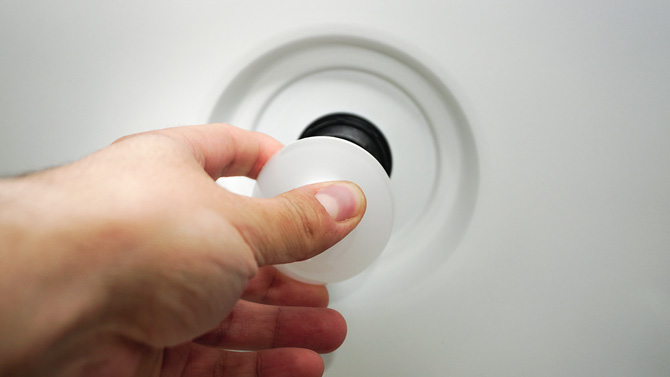LED bulbs are a far more cost-efficient, environmentally-friendly option than traditional incandescent bulbs. With a life expectancy of 20 years or more (25x longer than incandescent), the energy savings from LED bulbs will more than make up for the higher initial purchase price. However, if your LED bulbs burn out quickly, those cost savings are lost.

To understand why people may experience premature LED failure and how to make our LED bulbs last longer, I spoke with Martin Cross, Managing Director at INUI, a UK company specializing in the design, research and manufacture of LED lighting.
According to Cross, there are three critical components of an LED bulb: the LED chip, the LED driver (AC to DC converter) and the heat-sink. When manufacturers skimp on costs for any (or all) of these pieces, it can lead to early failure of the bulb. Cheap LED chips are more susceptible to overheating, which can “greatly shorten the life of the chip." The LED driver must supply a very stable current, or it can cause the LED chip to burn out; Cross says that low-cost power supplies may have very few safety features within the electronic circuitry designed to supply stable voltage and current to the LED chip. And if a company uses cheap, thin metal that has poor heat conducting qualities for its heat-sink, it won’t do its job of keeping the chip cool.
Read more: These Clever Outlet Covers & Light Switches Have Built-in Nightlights
How to make your LED bulbs last longer
So, if you want to make your LED bulbs last longer, here are three steps you can take to get the most out of your investment:
Avoid cheap, no-name LED bulbs
Low cost may indicate that the manufacturer cut corners on components, making the bulb less able to withstand heat or current issues. If you’re not familiar with LED brands, check reviews before you buy and make sure those ratings aren't inflated by fake reviews.
Check the expected bulb lifespan
While LED bulbs can last for more than 20 years, many are rated for much lower lifespans. Check for the "average life" of the bulb, so you're not unpleasantly surprised. For instance, a bulb with an average life of 25,000 hours will operate for 9.7 years if it's on 7 hours every day. However, I've seen bulbs rated for 7,700 hours, which will wear out in about 3 years.
Don’t use LED bulbs in enclosed fixtures or recessed cans
When LED bulbs are used in enclosed fixtures and recessed can, excess heat can build up, unless the bulb is specifically rated for that purpose. You can find enclosed fixture rated bulbs on Amazon for less than $2.00 per bulb.
Use dimmable LED bulbs and dimmers designed for LED bulbs
Dimmers that aren’t designed for LED bulbs may not supply the correct current, which can cause flickering, damage the circuitry and shorten the life of your bulbs. Always use a dimmer that is made for LEDs. I experienced this exact issue in our bathrooms when we switched to LED bulbs. Our dimmers were older Lutron models that were not rated for LED bulbs and we had frequent failures. I upgraded to a Lutron occupancy sensor dimmer that is rated for LEDs (a great option if your kids always leave the lights on, BTW) and have had no issues since. Similarly, if you are using a LED-compatible dimmer, always use LED bulbs that indicate “dimmable” in the description to avoid circuitry damage.
Read more: How to Buy the Right Light Bulb
Updated on 7/26/2024 with current pricing and bulb lifespan information.
[Image credit: Hand changing LED light bulb via BigStock Photo]
Josh Kirschner is the co-founder of Techlicious and has been covering consumer tech for more than a decade. Before founding Techlicious, he was the Chief Marketing Officer for Inform Technologies, a start-up provider of semantic technology to media companies. Prior to Inform, Josh was a SVP and Managing Director in the financial services industry. Josh started his first company while still in college, a consumer electronics retailer focused on students.














From Loren Lewis on August 10, 2022 :: 5:07 pm
Now I know why the LEDs in my drop ceiling recessed fixtures have been failing.
Reply